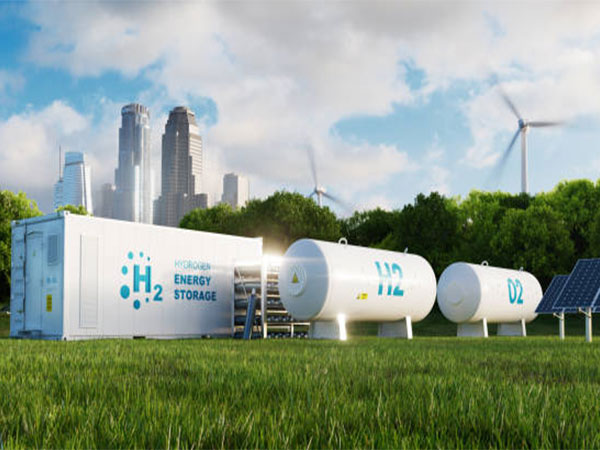
New Delhi: India has made a giant stride towards a greener future with the inauguration of its first multi-purpose green hydrogen pilot project at the 1,500 MW Nathpa Jhakri Hydro Power Station (NJHPS) in Himachal Pradesh’s Jhakri recently.
Spearheaded by Satluj Jal Vidyut Nigam (SJVN), the green hydrogen produced from the project will be utilized for the High-Velocity Oxygen Fuel (HVOF) Coating Facility of NJHPS to meet its combustion fuel requirements.
In addition, it will also generate electricity through its fuel cell of 25 kW capacity.
The first Multi-purpose (Combined Heat & Power) Green Hydrogen Generation Plant of the nation is poised to accelerate the development of green hydrogen production infrastructure in the power sector, thus establishing green hydrogen as a clean energy source.
What can be expected from the project?
The state-of-the-art Green Hydrogen Pilot Project is set to produce 14 kilograms of Green Hydrogen daily during 8 hours of operation.
The hydrogen produced will be stored at a pressure of 30 bars, in six storage tanks, with a total storage capacity of 12 m3.
The project will produce hydrogen using an alkaline electrolyzer of 20 Nm3/hour capacity, which would be powered by renewable energy supplied from 1.31 MW Solar Power Plant of SJVN in Wadhal, Shimla.
Besides generating power, the green hydrogen will also be used for High-Velocity Oxygen Fuel Coating of turbine underwater parts.
India and the National Green Hydrogen Mission
Last year, the Indian Cabinet, chaired by Indian PM Narendra Modi, approved National Green Hydrogen Mission.
The Cabinet also approved the National Green Hydrogen Mission with an outlay of Rs. 19,744 crore from FY 2023-24 to FY 2029-30.
According to the government, the Mission will have wide-ranging benefits- creation of export opportunities for Green Hydrogen and its derivatives; decarbonisation of industrial, mobility and energy sectors; reduction in dependence on imported fossil fuels and feedstock; development of indigenous manufacturing capabilities; creation of employment opportunities; and development of cutting-edge technologies.
India’s Green Hydrogen production capacity is likely to reach at least 5 MMT per annum, with an associated renewable energy capacity addition of about 125 GW, the government said.
What is the 2030 target?
The targets by 2030 are likely to bring in over Rs. 8 lakh crore investments and create over 6 lakh jobs.
Nearly 50 MMT per annum of CO2 emissions are expected to be averted by 2030.
The Mission aims to facilitate demand creation, production, utilization and export of Green Hydrogen.
Under the Strategic Interventions for Green Hydrogen Transition Programme (SIGHT), two distinct financial incentive mechanisms – targeting domestic manufacturing of electrolysers and production of Green Hydrogen – would be provided under the Mission.
The Mission would also support pilot projects in emerging end-use sectors and production pathways.
Regions capable of supporting large-scale production and/or utilization of Hydrogen would be identified and developed as Green Hydrogen Hubs.
What is the future of Green Hydrogen?
According to International Energy Agency, the annual production of low-emission hydrogen could reach 38 Mt in 2030, if all announced projects are realised, although 17 Mt come from projects at early stages of development.
The potential production by 2030 from announced projects to date is 50% larger than it was at the time of the release of the IEA’s Global Hydrogen Review 2022.
Global hydrogen use reached 95 Mt in 2022, a nearly 3% increase year-on-year, with strong growth in all major consuming regions except Europe, which suffered a hit to industrial activity due to the sharp increase in natural gas prices, IEA website said.
What is the future of India?
Seeing the observation of IEA, it can be presumed that the Indian government has taken a positive initiative and may become one of the leading forces in green energy revolution in the next few years.